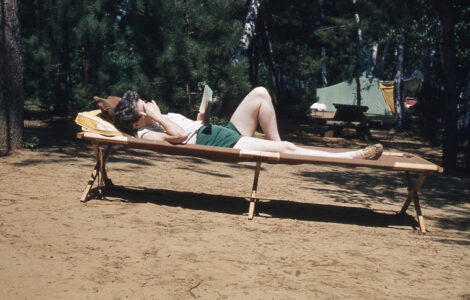Extremes in weather can profoundly affect maple syrup production

The Sugarhouse at the Brandy Brook Maple Farm in Ellenburg (Photo provided)
Northern New Yorkers are definitely not strangers to cold winter weather. But most of us would rather have not had to deal with the brutally relentless cold that gripped much of the nation during December and January.
According to data from the Southeast Regional Climate Center, cities including Buffalo; Worcester, Massachusetts; and Bangor, Maine all experienced their coldest two-week-stretch of weather ever recorded last Dec. 23 to Jan. 5.
The week between Christmas and New Year’s was the coldest on record in Buffalo’s history. And, on Dec. 28, 30 record-low temperatures were set across the country, the lowest of which was recorded in Watertown: minus-32 degrees. Eighteen east coast cities saw record lows on Jan. 2, including Morrisville, Vermont at minus-29 degrees. Their previous low for that date was minus-14 degrees. And let’s not forget he first major storm of 2018, the infamous “bomb cyclone” or bombogenesis.
Yet as I start to write this, it’s raining and it’s 60 degrees outside. We’re experiencing record, or at least near-record high temperatures, across the region. And rain, not snow, is in the longer-range forecast, with several days of above freezing daytime temperatures and below freezing nights predicted.
It’s a welcome break, but what does this early stretch of unseasonably warm weather mean for the maple syrup industry? After all, sugaring is weather-related. A successful season is, to a great extent, dependent upon the freezing nights and daytime thaws that cause sap to run. Many producers will tell you that optimum sap production occurs when nighttime temperatures fall into the 20s and daytime temperatures range in the 40s, preferably with sunny skies — conditions associated with the winter season gradually transitioning to spring.
Area maple syrup producers have traditionally tapped their trees in late February and/or early March, in anticipation of four to six weeks of sap flow in March and April. But in recent years, a pattern of earlier, often substantial, mid-winter sap runs has become the norm. And, because of this, several producers are putting at least some of their taps in early. This year, as in recent years, producers across the region have already had sap running. Many smaller operations and those at higher elevations report that they’ve been collecting sap, but haven’t yet boiled, while some of the larger operations, and even some of the smaller maple farms in or near the Champlain and St. Lawrence Valleys, are already making syrup.
Researchers with the Cornell Sugar Maple Program and the University of Vermont Proctor Maple Research Center, and elsewhere, have been looking closely at changes in the onset and duration of the maple sugaring season for more than a decade. A Cornell study, funded by the New York State Agricultural Experiment Station and the National Oceanic and Atmospheric Administration, completed in 2010, looked at the relationship between sap flow and temperature at thousands of locations from North Carolina to Quebec to Minnesota. Those investigators determined that starting dates for tapping maples in the Northeast are now about a week earlier than in 1970.
The perception among many New York and New England maple syrup producers, is that the region now receives considerably more warm weather during the tapping season than it once did. There’s also a general feeling that sap flows may not be as heavy in late winter and early spring as they once were, that they are certainly less consistent, that spring often arrives earlier and that winters are generally less severe.
A 2007 study conducted by scientists at the UVM Proctor Center confirmed that our average maple syrup season – the traditional short season of daily freeze and thaw cycles — has gotten about three days, or 8 to 10 percent, shorter than it was in the 1940s. And more and more producers are tapping earlier than their predecessors did.Sugar makers who’ve tapped early have all had positive results.
According to the United States Department of Agriculture National Agricultural Statistics Service, American maple syrup producers set 13,341,000 taps in 2017, which produced 4,271,000 gallons of maple syrup; just a bit less than one third of a gallon per tap. The retail value of the 2017 maple syrup crop won’t be released until June. But in 2016, the U.S. maple syrup crop had a retail value of more than $147 million. Syrup produced in New York and the New England states accounted for more than 85 percent of that crop’s value; $126,217,000.
You can support New York State Maple Producers Association sugar makers (nysmaple.com) and the maple products industry in New York state by buying maple and buying local.



